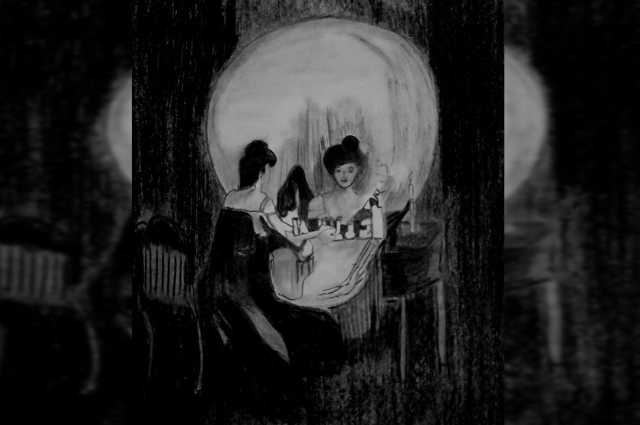
Photo by Alexander Krivitskiy on Unsplash
She is scared. Of men.
She is scared. Not just of danger, but of men around her- those meant to protect and those who threaten. In a society where violence against women is as ordinary as dinner plans, this fear is quite constant, shaping her every move- her life.
Even the slightest mistake makes her shiver at the thought that the man in charge—a boss, father, friend, boyfriend, husband, or brother—would strike her.
Is this normal? Society might think so, dismissing this fear as exaggeration or hysteria. They might feel proud of claiming her as the man’s property. But to her, every moment is a question of survival.
While today’s society often dismisses her fear as mere hysteria, history tells us a different story of women who were respected for their courage and agency. Once, women walked these streets as leaders, scholars, and warriors. Respect wasn’t a plea but a right. She was valued, not as a woman but as a human being. The historical epics and tales of our culture once showcased women’s resilience and independence. In The Palace of Illusions, Draupadi is portrayed not just as a wife or queen, but as a woman who demands respect, who dares to question, who refuses to be silenced. Likewise, in The Forest of Enchantments, Sita’s journey shows her not as a passive victim, but as a figure of strength, grappling with betrayal and yet standing firm in her choices. Women in these tales were flawed and complex, human in their strength and dignity. They were warriors, sages, rulers—whole individuals in their own right.
But something has shifted. Society no longer sees this woman as a leader or a human deserving respect, only as another victim in waiting. And it seems only the loudest crimes, the most ‘headline-worthy’ attacks, deserve the public’s attention.
Every fifteen minutes a rape happens in India. And justice only calls when it’s a famous name or a scandal in the right circles. The others? They’re left to be statistics, unseen and unheard. Disturbingly, three out of every four women knew their attackers-friends, neighbors, or even family. It leaves me wondering: was it assault, or just another routine display of power and disregard for women? Every time a woman is violated, whether by a stranger or her husband- the stranger is seen as a criminal, while the husband is not. When ‘no’ truly means ‘no’, shouldn’t both be considered as violence committed without her consent?
I ask myself: if justice only calls for a few, what about the rest? Women everywhere are looking for answers, but many keep quiet, wondering if anyone is listening. Even if someone is, what solutions do we have? Restricting girls indoors after 7 p.m. isn’t safe, just another confinement. But even the home isn’t safe anymore. So what now? Do women need to accept a fate dictated by the whims of those raised within patriarchal structure that encourage dominance and disrespect.
I wonder if women have always carried this fear, even if the stories never depicted it explicitly. Have they been forced to mask their apprehensions behind stoic faces, or is this fear newly realized in a world where freedom should be given? Perhaps she yearns more than ever for a life where respect is her birthright, as it once was for Sita and Draupadi. Why must she sacrifice everything—her home, her dreams, her sense of safety—just to feel normal? Why must she shrink herself to feel safe in spaces that should belong to everyone equally? Why should she have to move somewhere new, far from the grip of oppressive societal expectations, to feel free?
Does violence give control, or is it the manifestation of fear? The fear of losing power, the fear of isolation, the fear of failure. Perhaps it is men’s fear—a fear of inadequacy and vulnerability—that manifests in dominance and anger. She is expected to live with this fear daily, to flinch at raised voices or belts, to quiet her voice for her survival. Yet, rather than question those who instill this fear, society often asks her to seek therapy, as though it’s her fault for feeling the way she does.
This unbalanced world has never been kind to the compassionate and kind-hearted. Stories of violence against marginalized groups, including transgender individuals, make the news as well. These people, who are often brave enough to embrace their authentic selves, face disdain instead of acceptance. If men could learn to embrace their vulnerabilities, perhaps they wouldn’t feel the need to assert their strength through domination.
For every woman who hides her achievements, who has never been told she matters, there lies a potential for change. One day, when she realizes her true worth, society won’t stand a chance. Perhaps there will be redemption, not because those who hurt her deserve it, but because she is strong enough not to be consumed by darkness.
What happened to you, men? When did you start fearing the women you once loved? When did disrespect take the place of admiration? Are you so threatened by a woman’s strength that the only response left is to belittle or silence her? What would happen if men evaluated women with the same respect they once did Sita or Draupadi? Clothes, smiles, temple visits—none of these shielded women from violence, so what will?
Throughout history, women have fought silently, enduring the world’s expectations without abandoning their hopes for a kinder, safer world. From Sita’s determination in the face of exile to Draupadi’s strength in the face of indignity, their stories remind us that this fear does not need to be our legacy. Someday, society will see these women for what they are—brave, resilient, and deserving of respect. Until then, the fear lives on, hidden in silence and now named Androphobia.
Someday, society must acknowledge the silent warriors—women who live each day demanding nothing but the respect and freedom they deserve. Until then, let each of us become allies, advocates, and protectors of that dream, actively creating a world where fear is no woman’s birthright, and respect is no longer a plea but a promise.

